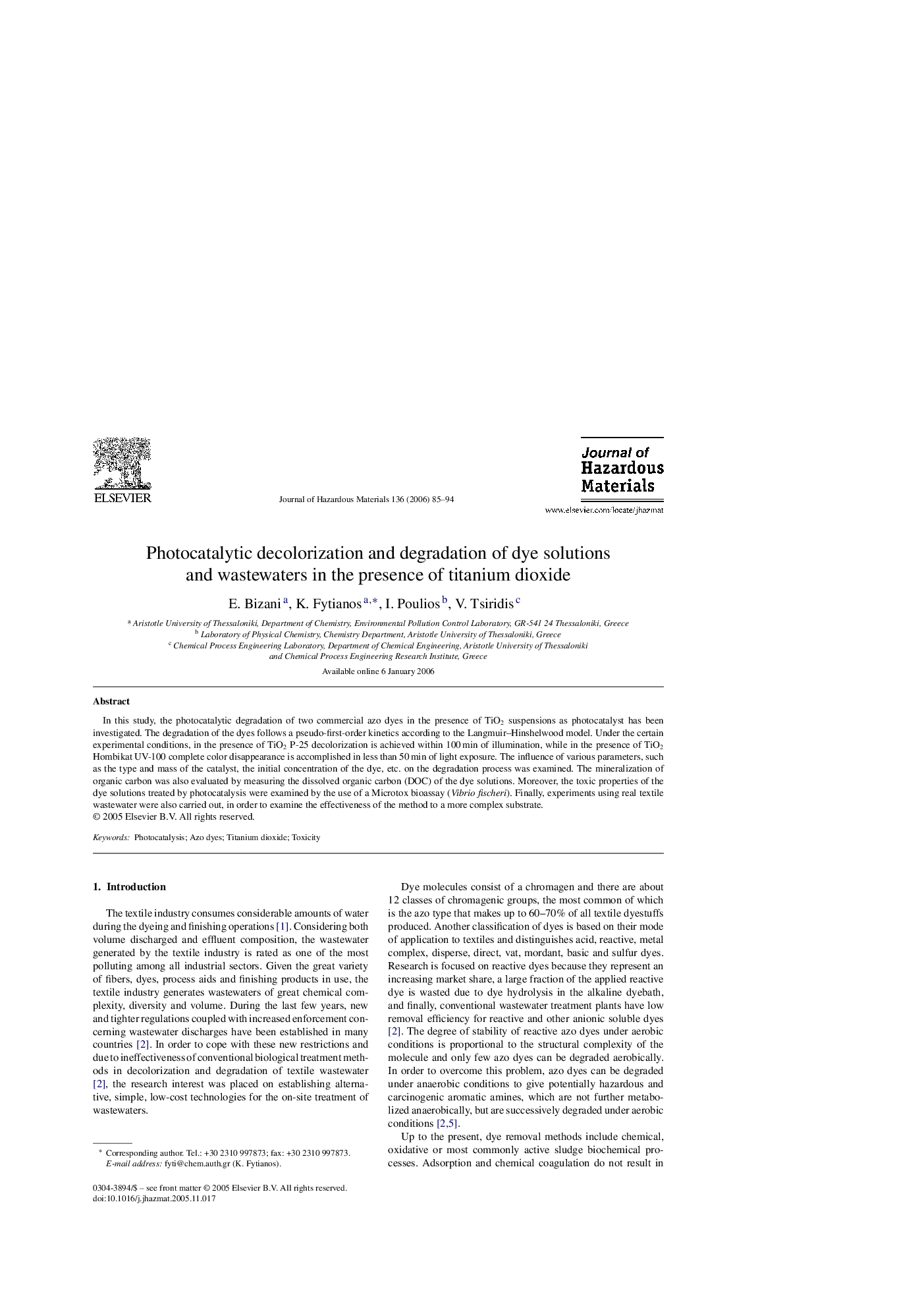| Article ID | Journal | Published Year | Pages | File Type |
|---|---|---|---|---|
| 585792 | Journal of Hazardous Materials | 2006 | 10 Pages |
In this study, the photocatalytic degradation of two commercial azo dyes in the presence of TiO2 suspensions as photocatalyst has been investigated. The degradation of the dyes follows a pseudo-first-order kinetics according to the Langmuir–Hinshelwood model. Under the certain experimental conditions, in the presence of TiO2 P-25 decolorization is achieved within 100 min of illumination, while in the presence of TiO2 Hombikat UV-100 complete color disappearance is accomplished in less than 50 min of light exposure. The influence of various parameters, such as the type and mass of the catalyst, the initial concentration of the dye, etc. on the degradation process was examined. The mineralization of organic carbon was also evaluated by measuring the dissolved organic carbon (DOC) of the dye solutions. Moreover, the toxic properties of the dye solutions treated by photocatalysis were examined by the use of a Microtox bioassay (Vibrio fischeri). Finally, experiments using real textile wastewater were also carried out, in order to examine the effectiveness of the method to a more complex substrate.
